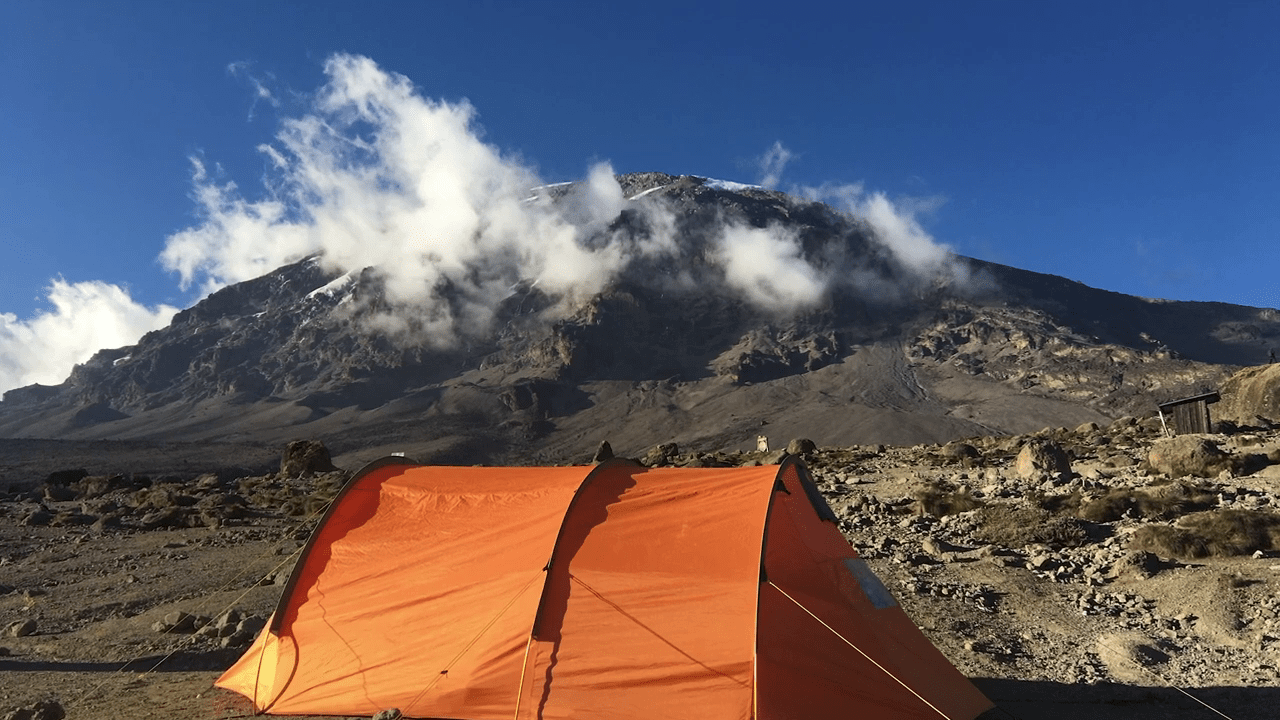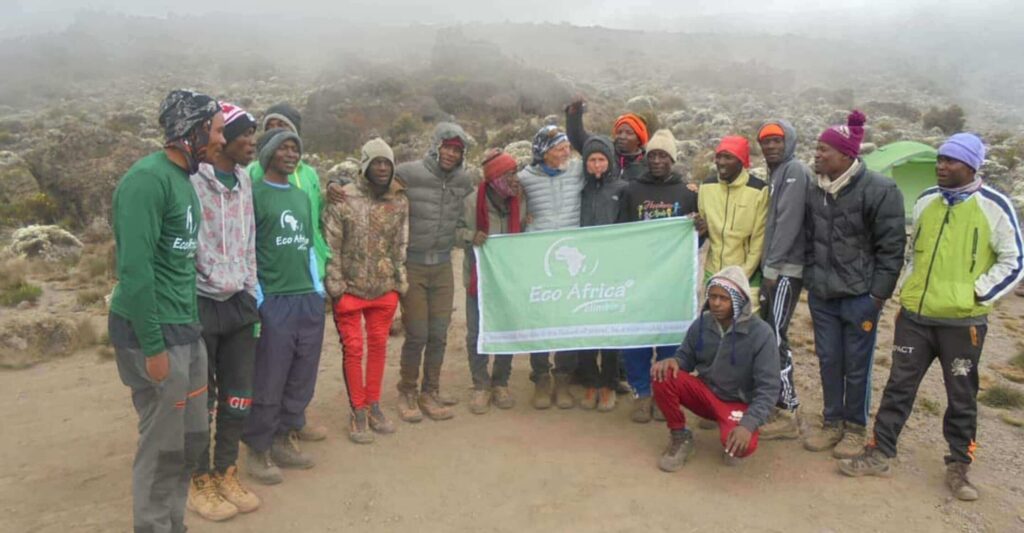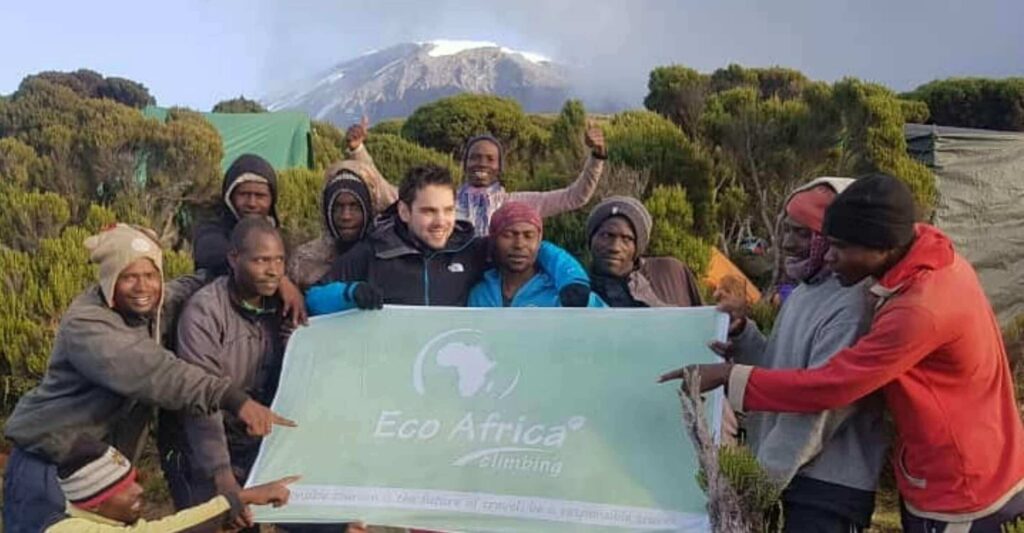
Climbing Kilimanjaro: The Ultimate Guide to Africa’s Highest Peak
Introduction
Why Climbing Kilimanjaro Is a Life-Changing Experience
Climbing Mount Kilimanjaro isn’t just a trek—it’s a once-in-a-lifetime achievement that combines endurance, beauty, and the raw challenge of standing on the roof of Africa. At 5,895 meters (19,341 feet), Kilimanjaro is the highest mountain in Africa and the world’s tallest free-standing mountain. It doesn’t require technical mountaineering skills, making it a dream summit for adventurers across all backgrounds.
From dense rainforests to alpine deserts and finally an arctic summit zone, this journey takes you through five climate zones in just a few days. Thousands of climbers attempt this feat annually, but only those who prepare properly and climb responsibly—often with expert local guides like Eco-Africa Climbing—reach Uhuru Peak.
Is Kilimanjaro Right for You?
You don’t need to be a professional climber to summit Kilimanjaro, but you do need preparation, determination, and the right support team. The biggest hurdle isn’t the distance—it’s the altitude. If you can hike for several hours a day and commit to some basic training, this climb is within reach. With the right acclimatization and ethical, experienced guidance, you can turn this goal into reality.
Where Is Mount Kilimanjaro and Why It’s Unique
Geography and Location
Mount Kilimanjaro is located in northeastern Tanzania, close to the Kenyan border, and is part of Kilimanjaro National Park. It’s a dormant stratovolcano composed of three cones: Kibo (the summit), Mawenzi, and Shira. It’s also a UNESCO World Heritage site and one of the most iconic destinations on the continent.
Kilimanjaro’s Unique Climate Zones
One reason Kilimanjaro is so extraordinary is the rapid transition between five climate zones:
- 1. Cultivation Zone (800–1,800m): Farmland and villages around the base of the mountain.
- 2. Rainforest Zone (1,800–2,800m): Dense, wet jungle rich in wildlife like colobus monkeys.
- 3. Moorland Zone (2,800–4,000m): Rocky, open areas with strange-looking plants like giant groundsels.
- 4. Alpine Desert Zone (4,000–5,000m): Harsh, dry, and windy terrain with wide temperature swings.
- 5. Arctic Summit Zone (5,000–5,895m): Ice and snow with little oxygen—this is summit territory.
It’s a surreal feeling to trek from equatorial forests to glaciers—all on the same mountain, in under a week.
Can Anyone Climb Kilimanjaro?
Fitness Requirements
Kilimanjaro is a non-technical trek, meaning no ropes or climbing experience needed. But don’t underestimate it. Hikes can last 6–8 hours per day, and summit night can stretch to 12–14 hours in frigid conditions. Basic cardiovascular fitness, strong legs, and stamina are essential. We recommend following a structured fitness program like our 12-Week Kilimanjaro Training Plan.
Is There an Age Limit?
The minimum legal age to climb Kilimanjaro is 10. There’s no maximum age, as long as you’re medically fit and cleared by a doctor. Many successful climbers are in their 60s and 70s. Learn more about required health checks here: Medical Checkup Before Kilimanjaro Climb.
Do I Need Climbing Experience?
Not at all. Kilimanjaro is a high-altitude trek, not a mountaineering climb. Your guide’s job is to keep the pace slow (“pole pole”) and support you with expert acclimatization and logistics. Trust the process and your chances of success will soar.
Kilimanjaro Route Overview
Lemosho Route
The Lemosho Route is a favorite for good reason. It’s scenic, quiet, and allows superb acclimatization. It’s perfect for first-time climbers looking for a higher summit success rate. Choose from:
Machame Route
Known as the “Whiskey Route,” this is the most popular option. It’s challenging but beautiful, and it offers strong acclimatization. Check out the itinerary: 7 Days Machame Route.
Northern Circuit
The longest and most remote trail—perfect for those who want a quieter, high-success trek. You’ll circle the mountain and enjoy views from every angle.
Other Routes: Rongai, Marangu, Umbwe, Shira
There are other excellent routes based on your preference:
- Rongai Route – Dry and less crowded
- Marangu Route – The only hut route (less popular)
- Umbwe Route – Short and steep (for experienced trekkers)
- Shira Route – Similar to Lemosho but starts higher
How Long Does It Take to Climb Kilimanjaro?
Depending on the route and your acclimatization schedule, a Kilimanjaro climb can take between 5 and 9 days. The shorter treks are more physically demanding and come with a much lower summit success rate. If you want to enjoy the experience and give your body a proper chance to adjust, aim for 7 or 8 days.
Here’s a quick breakdown:
- 5-6 Days: Used mostly on Marangu and Umbwe Routes. Fast, but lower success rates due to rapid ascent.
- 7 Days: Ideal for Machame, Rongai, and Lemosho Routes. Balanced pace with solid acclimatization.
- 8-9 Days: Best for Lemosho and Northern Circuit Routes. Highest summit success rate, safer for altitude adjustment.
Want the full itinerary day-by-day? Check this out:
Kilimanjaro Daily Schedule
Best Time to Climb Kilimanjaro
Kilimanjaro can be climbed year-round, but the best conditions fall within two dry seasons:
- January to mid-March: Warm and clear skies. Less crowded.
- June to October: Dry, clear, and more popular with groups.
Avoid the rainy months—April, May, and November—unless you’re experienced and well-prepared for mud and wet gear. For detailed seasonal info, check out:
Best Time to Climb Kilimanjaro
Understanding Acclimatization on Kilimanjaro
The higher you go, the thinner the air gets. That’s why your body needs time to adjust to reduced oxygen. Acclimatization is the key to your success on Kilimanjaro. Without it, even the fittest trekkers fail due to altitude sickness.
Tips for acclimatizing:
- Climb slowly: “Pole pole” is your best friend.
- Drink lots of water: At least 3-4 liters per day.
- Add an acclimatization day: Especially at Barranco or Karanga Camp.
- Use Diamox: An altitude medication that may help. Ask your doctor.
Read more here:
Altitude Sickness on Kilimanjaro
Essential Kilimanjaro Gear Checklist
Having the right gear can mean the difference between a miserable and an enjoyable climb. You’ll face hot days, freezing nights, and possible snow at the summit. That means you need a solid layering system and quality equipment. Here’s what to bring:
General Gear (For Everyone)
- Base layers (thermal tops and bottoms)
- Insulating mid-layers (fleece, down jackets)
- Outer shell (waterproof jacket and pants)
- Sturdy waterproof hiking boots
- 4-season sleeping bag (-10°C or colder)
- Headlamp, gloves, sunglasses, sun hat
- Trekking poles (recommended)
Full gear list here:
Kilimanjaro Packing List
Kilimanjaro Gear for Women
Ladies need to factor in comfort, layering, and hygiene. Here’s what to consider:
- Comfortable sports bras (no underwires)
- Feminine hygiene items (menstrual cups or pads)
- Privacy she-pee or FUD (female urination device)
- Leggings + base layers tailored for cold nights
View our recommended PDF here:
Gear Checklist for Women
Rental Gear in Moshi
Don’t want to buy everything? No worries. In Moshi, you can rent high-quality equipment including:
- Mountain Hardwear Sleeping Bag (-29°C) – $50 per trip
- Down jackets, trekking poles, duffel bags
- Gaiters, balaclavas, waterproof pants
View full rental list and prices here:
Eco-Africa Climbing Rental Gear List
Kilimanjaro Ethical Climbing and KPAP Standards
What Is KPAP and Why It Matters
The Kilimanjaro Porters Assistance Project (KPAP) is a non-profit that ensures ethical treatment of porters on the mountain. KPAP monitors climbing companies and certifies those who treat their crew fairly. This includes paying fair wages, limiting porter loads, providing proper meals and shelter, and ensuring safe working conditions.
Only a handful of tour operators are proud KPAP partners. One of them is Eco-Africa Climbing, which is fully KPAP-certified and deeply committed to responsible tourism.
Why You Should Choose an Ethical Operator
Hiring a company that isn’t KPAP-aligned often means porters are overloaded, underpaid, or even left behind sick. Choosing a responsible guide like Eco-Africa Climbing protects not only the crew but your safety too. A happy, well-treated team = a stronger, safer summit.
Fair Treatment of Porters
Your porters are the backbone of your climb. They carry gear, cook food, pitch tents, and support you up the mountain—often with superhuman strength and heart. Fair treatment means:
- Carrying no more than 20kg of load
- Receiving at least three meals per day
- Wearing proper mountain clothing and boots
- Sleeping in warm, safe tents
Your choice of operator directly affects their well-being. Go with someone who walks the talk—like Eco-Africa Climbing.
Tipping on Kilimanjaro: What’s Expected
Tipping is standard and deeply appreciated on Kilimanjaro. It’s how you say “thank you” to the team that helped you reach the top.
Here’s a general tipping guide per day:
- Lead Guide: $20–25
- Assistant Guide: $15–20
- Cook: $15
- Porter: $8–10
You can learn more about team structure and tipping here:
Tipping on Kilimanjaro
Kilimanjaro Climbing Costs: What You’re Paying For
Climbing Kilimanjaro is not cheap—and that’s a good thing. The cost includes government park fees, wages, equipment, food, transport, and more.
Here’s what to expect:
- Budget operators: $1,400–$2,000 (often cut corners)
- Mid-range: $2,000–$3,000 (best value)
- Luxury climbs: $3,500–$6,000+ (more comfort, same mountain)
You can compare all climb packages here:
Kilimanjaro Price Breakdown
Kilimanjaro Bathrooms, Campsites, and Accommodations
Public toilets on Kilimanjaro are long-drop style, and conditions vary by campsite. But don’t worry—most quality tour companies offer private toilet tents (included in many Eco-Africa Climbing packages).
Here’s what to expect:
- Camping Routes: Tents at designated campsites (Lemosho, Machame, Rongai, Umbwe, Northern Circuit)
- Marangu Route: Dormitory-style huts
Learn more about life on the mountain:
Sleeping on Kilimanjaro
Food on Kilimanjaro
Kilimanjaro Rules and Safety Protocols
There are strict rules when climbing Kilimanjaro, enforced by TANAPA:
- You must climb with a licensed guide
- No plastic
- Minimum age is 10
- Camping is permitted only at designated sites
In case of emergencies, helicopter evacuation is available—only when coordinated by an approved guide like ours.
More here:
Evacuation Protocol
Kilimanjaro Helicopter Rescue
How Difficult Is Climbing Kilimanjaro?
Kilimanjaro is a non-technical trek, but make no mistake—it’s physically and mentally demanding. The real challenge isn’t the trail, it’s the altitude. As you rise above 4,000m, the oxygen drops to about 60% of sea level. Even basic walking becomes exhausting.
The most difficult part is summit night. You’ll wake up around midnight and hike for 6-8 hours in the cold and dark, aiming to reach Uhuru Peak by sunrise. Then, you descend all the way to a lower camp. It’s a 12–14-hour day.
Preparation, mindset, and a great support crew are essential to overcome this.
Learn more here:
Tips for a Successful Summit
Is Climbing Kilimanjaro Dangerous?
Kilimanjaro is generally safe with a qualified guide, but the altitude can be dangerous if not managed properly. An estimated 3–10 people die on the mountain each year, mostly due to altitude-related illnesses or pre-existing conditions.
Choose a certified operator that provides:
- Pulse oximeter monitoring
- Emergency oxygen
- Evacuation plans
- Medical-trained guides
Explore how we manage your safety:
Kilimanjaro Safety Protocol
Pulse Oximeter
Emergency Oxygen
Diamox Information
Kilimanjaro Tour Packages
Whether you’re climbing solo, joining a group, or want a private or luxury experience—Eco-Africa Climbing has the right tour package for you. All our packages include:
- KPAP-verified ethical climbs
- Certified guides and full mountain crew
- All park fees, meals, tents, and transfers
- Pre/post climb accommodation in Moshi
Check what’s included:
What’s Included
What’s not included:
Extras Not Included
Why Eco-Africa Climbing Is the Best Local Guide
We’re a locally owned Tanzanian company with international-level service. Many of our clients are surprised to find that we’re not an overseas agent—we just deliver so well that they assume so. Here’s why we stand out:
- Full KPAP Partner for ethical porter care
- 7-star mountain services (verified by hundreds)
- Expert guides with 10+ years of experience
- Personalized customer service with heart
Don’t just take our word for it—read our client feedback:
Eco-Africa Climbing TripAdvisor Reviews
Helpful Resources for Climbing Kilimanjaro
- Kilimanjaro Packing List
- Altitude Sickness Guide
- How to Train
- Visa Requirements
- Tanzania Vaccinations
- Getting to Kilimanjaro
FAQs About Climbing Kilimanjaro
Can I climb Kilimanjaro with no hiking experience?
Yes, but you need to train. It’s a trek, not a technical climb, but altitude and long days are still tough.
Do I need travel insurance?
Yes, and it must include high-altitude trekking. Learn more here: Kilimanjaro Travel Insurance
What happens after the climb?
Most people return to Moshi to rest, or extend their trip to explore safaris or Zanzibar. What to Do After Kilimanjaro
Can I climb solo?
Not legally. You must climb with a licensed guide per park rules.
What’s the altitude of Uhuru Peak?
5,895 meters (19,341 feet) above sea level. Highest point in Africa!
Conclusion: Ready to Climb Kilimanjaro?
Climbing Kilimanjaro is more than a trek—it’s a journey of personal growth, discipline, and awe. Whether you’re chasing a bucket list dream or a spiritual summit, preparation is everything. Choose the right time, train smart, pack right, and above all—climb with an experienced, ethical local operator like Eco-Africa Climbing.
Have questions or ready to book?
Contact Eco-Africa Climbing today and let’s start planning your journey to the Roof of Africa.
Our Top Recommended Ethical Kilimanjaro Climbs
Ethical Kilimanjaro via Northern Circuit Route 9 Days
The Northern Circuit route is one of the best routes on Kilimanjaro.The route approaches Mount Kilimanjaro from the west….
From USD $3250
Ethical Kilimanjaro via Lemosho Route 8 Days
The Lemosho route is one of the newer routes on the mountain and a superb choice for your climb, It is our preferred route…
From USD $2950
Ethical Kilimanjaro via Machame Route 7 Days
Machame (“Whiskey”) Route is also known as the “Whiskey” route, the Machame route is now the most popular route on the …
From USD $2650


